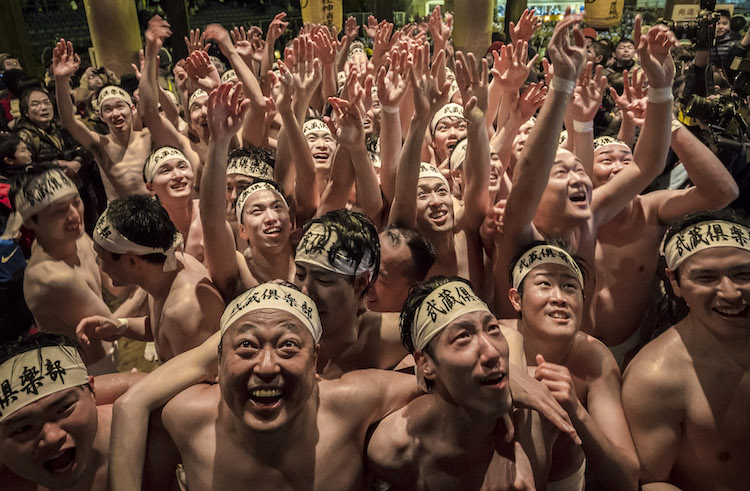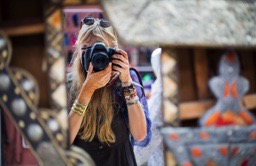How to Get Your Travel Photos Published by an Editor
To become a published travel photographer, you have to get out there and pitch your own projects. But what are editors looking for? Photographer Mark Edward Harris shares his advice.
 Photo © Mark Edward Harris
Photo © Mark Edward Harris
Most photographers who have succeeded in this industry have come up with their own ideas and then pitched them to potential clients – rather than waiting for the phone to ring.
Publications need editorial content and they don’t have all the answers.
In order to get your work out for the world to see, here are some tips to help you find your own unique stories and some advice on how to get them published.
- Types of photography assignments
- Finding your story
- Go beyond the location
- Be specific
- Start with your interests
- Get to know the publications' lead times
- Making your pitch
- Stock photography
- Consistency is key
Types of photography assignments
Professional travel photographers typically get three types of assignments. The first is to illustrate a story for a magazine (print or digital) or a newspaper. This falls into the category of editorial photography.
The second can be referred to as corporate photography: creating images that will be used in travel brochures or other related material.
The third, and by far the most lucrative, are advertising assignments that promote a property or destination.
Publications want to have exciting editorials to attract a larger audience (circulation), which in turn will give them the opportunity to command higher rates for their advertising space.
Study travel magazines to get a clearer idea between editorial and advertising photography, and try to ask yourself why these particular images were selected; the more you can understand what editors are looking for, the more likely you’ll be able to create images that sell.
Find your story
So, what types of stories will get an editor’s attention?
At its most basic, a travel photo essay is a series of images that make up a story. Like any good book, it should have a strong beginning, middle, and end.
Like chapters in a book, the images should relate to each other as you move through the story and come to a successful conclusion.
But to really stand out, you’ve got to find a unique story. Get inside your location, find human-interest story angles, or try pegging your photo essay to the anniversary of a special event.
Go beyond the location
Travel editors have a mantra: “a location is not a story.” For the most part, this is true – except when locations are so off-the-beaten-path that they warrant a wider focus.
For example, Eve Arnold’s monumental book In China, published in 1980, came at a time when few Western photographers were allowed into the Middle Kingdom.
My magazine features, books, and exhibitions on North Korea and Iran have been successful because these countries are relatively unexplored with a camera.
So, unless you’re going to a country that’s far removed from the mainstream, you need to get more specific to create an interesting, photo-driven story.
Look for stories that give an inside look into a culture by focusing on a person, a ritual, or a unique aspect of history. The list is endless.
Be specific
Let’s say you’re planning to take a trip to Europe and would like to generate some magazine stories. You would never dare contact a travel editor and say, “I’m going to Europe and would like to do a story for you.” They would probably (or at least they should) hang up before you finish the sentence.
“I’m going to France . . .” Still too broad. Go deeper. Get specific.
An obvious hook for France could be its incredible wine country. That, of course, can be broken down further by region – and further still to look into the tradition and craftsmanship of French oak barrel coopers.
Start with your interests
The best photo essays are often the ones that come from a personal interest, so search “inside” before you go looking outside for ideas.
My interests in history and geopolitics have led me on a path to examine why things are the way they are in the world – not just documenting the present, but trying to infuse my stories with an awareness of the past.
The top travel journalists tend to have a niche or focus such as food, music, history, sports, adventure tourism, family travel, or nightlife. What’s yours?
Know the publication's lead times
Because of my interest in history, I pitched a story on the 70th anniversary of D-Day to Travel Weekly. The following sentence was part of my pitch and ended up in the printed story: “June 6, 2014, will mark the 70th anniversary of the D-Day landings on the beaches of Normandy that led to the liberation of France from German occupation and, within a year, the end of World War II in Europe.”
Since June 6, 1944, was the historic day on the beaches of Normandy I was focusing on, I had to pitch the idea in 2013 to have it published in time to be relevant to readers. Coming up with the idea too close to the actual anniversary would not have given the publication enough lead time.
Typically, online magazines have the shortest lead times followed by newspaper travel sections and travel/trade magazines with consumer travel magazines having lead times from three to six months. Travel photo books can be years in the making.
Making your pitch
A workshop student once asked, “Mark, when you pitch a story idea to a magazine, is there a format that you use on your proposal?”
Excellent question. My answer was that it depends on the relationship I have with the publication. Being specific in your pitches is a good idea in most instances.
If you have a good working relationship with an editor you may want to cast a wider net and see what they might want you to catch – in other words, to see if they have specific stories in mind for their upcoming issues.
If it’s a cold call, be more specific instead of sending out a basic feeler. If I’ve already started the project, I’ll usually attach a PDF contact sheet created in Lightroom to help “sell” my idea. While not every picture is worth a thousand words, a good visual reference can give the editor a much clearer idea of your story concept.
The budget is not normally discussed until a publication shows interest. Often they have a basic set fee, such as a day rate or for photo usage depending on the number and size of images used (the latter referred to as page rates).
Stock photography
Stock photography agencies such as Getty Images are libraries containing millions of images. Clients can search the vast database using keywords to track down visuals to illustrate their story, brochure, packaging, advertisement or any other number of usages.
Some images are sold by the size of the files purchased, others by usage. Essentially, photographers are paid a percentage of the stock sale that might be better referred to as a rental.
At the highest end of the stock photography market, agencies work strictly with contracted full-time professional photographers and expect a constant flow of new imagery to be uploaded with keywords and captions.
At this level, images usually need to be between 48 and 52 megabytes which can yield a typical magazine double page 11×17 at 300 dpi (dots per inch). On the other end of the digital upload is a team of editors that make their choices, add additional keywords, and find the appropriate collection for the images.
The stock photography market has changed dramatically in recent years with the proliferation of cameras – including smartphones – capable of shooting high-resolution images.
Micro-payment sites and crowdsourcing – harvesting visual content from almost anyone with a camera – has caused prices paid for stock images to dramatically drop: great for clients, not so good for professional photographers. But quality work will always rise to the top.
Consistency is key
As Marc Riboud has said, “Rather than a profession, photography has always been a passion for me, a passion closer to an obsession.” I completely agree – as would most or perhaps all the photographers I’ve had the honor to know over the years.
I do, however, keep regular business hours when I’m home to maintain a sense of normalcy and professional discipline.
The more pitches I send out, the more assignments come in. There is a direct correlation between input and output. As you sow, so shall you reap. In other words, put in the effort and you’ll see returns. Why should photography be different?
Related articles
Simple and flexible travel insurance
You can buy at home or while traveling, and claim online from anywhere in the world. With 150+ adventure activities covered and 24/7 emergency assistance.
Get a quote

2 Comments
Great advice! I understand it's not just going to remote places and shooting photos that travel photographers do. They need to think about various aspects of the target to get their work published... So interesting!
Do you send the same pitch to multiple magazines, or wait until one replies before going to the next one?